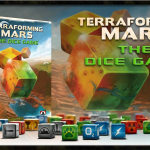Introduction
Super Mario Run: Since its debut in 2016, Super Mario Run has captivated millions of players worldwide with its unique take on the classic Mario formula. As the first Mario game designed specifically for mobile devices, it offered a fresh and accessible experience that expanded the beloved franchise beyond traditional consoles. While Super Mario Run is a game that has often been associated with its premium pricing model, many players are eager to explore whether a full version of the game can be accessed for free. This blog post delves into the various aspects of Super Mario Run, including its gameplay mechanics, its business model, and the options available for players seeking to enjoy the full game experience without paying.
The Genesis Of Super Mario Run
Super Mario Run was a groundbreaking release for Nintendo, marking the company’s entry into the mobile gaming market. Prior to its launch, Nintendo had been primarily focused on its dedicated gaming consoles, but the success of mobile gaming and the increasing number of players on smartphones prompted a strategic shift. The game was designed to capture the essence of traditional Mario games while adapting it for a touch-screen experience. This innovation brought Mario’s iconic gameplay to a new audience, blending familiar elements with modern mobile technology.
The game’s development aimed to maintain the core elements that fans love about Mario while simplifying controls to fit the mobile platform. This resulted in a game where players control Mario with a single tap, guiding him through various levels and overcoming obstacles with intuitive gestures. The game’s design philosophy was to offer a streamlined experience that could be enjoyed in short bursts, catering to the on-the-go lifestyle of mobile gamers.

Gameplay Mechanics And Features
At its core, Super Mario Run retains the classic platforming elements that define the Mario series. Players guide Mario through a series of side-scrolling levels, using simple tap controls to make him jump, perform acrobatics, and interact with the environment. The game features a mix of familiar gameplay mechanics, such as collecting coins, defeating enemies, and navigating through intricate levels, while introducing new elements tailored for the mobile experience.
One of the standout features of Super Mario Run is its “Auto-Run” mechanic, which allows Mario to continuously run forward. This design choice simplifies gameplay for mobile devices, as players need only focus on timing their taps to jump and perform various actions. The game also includes a variety of levels, each with its own unique challenges and themes, ensuring that players remain engaged and entertained throughout their experience.
The game offers several different modes, including the standard “World Tour,” where players traverse through different kingdoms and complete levels to rescue Princess Peach. There’s also the “Toad Rally” mode, which allows players to compete against others in time-limited challenges to collect the most coins and attract Toads to their kingdom. Finally, the “Kingdom Builder” mode lets players use the coins they’ve collected to build and customize their own Mushroom Kingdom, adding a layer of creative expression to the game.
The Business Model And Pricing
Super Mario Run was initially released as a free-to-play game with a significant caveat: while players could download and play the game for free, accessing the full range of content required a one-time purchase. This business model was a departure from the typical free-to-play format that relies on in-app purchases and microtransactions. Instead, Nintendo opted for a more traditional approach, where players paid a single fee to unlock the full game experience.
The initial download provided access to a limited portion of the game, including the first few levels of the World Tour mode and a sample of the other game modes. To unlock the full game, players needed to make a purchase of $9.99, which granted access to all levels, additional content, and the full range of features. This pricing strategy was designed to offer a premium experience without the ongoing costs often associated with free-to-play games.
Nintendo’s decision to use this model was influenced by their desire to offer a high-quality gaming experience without the intrusive monetization practices seen in many mobile games. By providing a clear and upfront cost for the full game, Nintendo aimed to deliver value to players while maintaining the integrity of the gameplay experience.
Exploring Free Access Options

For players interested in experiencing Super Mario Run without making the initial purchase, there are a few options to consider. While the game itself does not offer a completely free version of the full game, there are several ways to explore the content at no cost:
Trial Versions And Promotions: Occasionally, Nintendo has offered promotional events or trial versions of Super Mario Run that allow players to experience a larger portion of the game for free. These promotions might include special events, limited-time offers, or temporary access to additional content. Keeping an eye on official announcements and updates from Nintendo can provide opportunities to try the game without paying.
Discounts And Sales: Nintendo has been known to offer discounts and sales on their games, including Super Mario Run. During these sales, the game might be available at a reduced price, making it more affordable for players who are interested in purchasing the full version. Monitoring the App Store or Google Play Store for any discounts can be a way to access the game at a lower cost.
Game Reviews And Playthroughs: While not a substitute for playing the game yourself, watching gameplay videos, reviews, and playthroughs can provide a sense of the game’s content and mechanics. Many gaming enthusiasts and content creators share detailed videos of their experiences with Super Mario Run, offering insights into the gameplay and features. This can help players decide whether the game is worth the purchase.
Alternative Free Games: For those looking for a similar experience without the cost, there are several free-to-play platforming games available on mobile devices. While these games may not feature Mario or the same level of polish as Super Mario Run, they can provide an enjoyable platforming experience without the need for a purchase.
The Impact Of Super Mario Run
Super Mario Run’s release marked a significant milestone for Nintendo and the mobile gaming industry. By bringing Mario to mobile devices, Nintendo demonstrated their ability to adapt their iconic franchises to new platforms while maintaining the quality and charm that fans expect. The game’s unique approach to mobile gameplay, combined with its premium pricing model, set it apart from other titles in the mobile market.
The game’s success also paved the way for other Nintendo franchises to explore the mobile space. Following Super Mario Run, Nintendo released several other mobile games, including Animal Crossing: Pocket Camp and Fire Emblem Heroes, each of which brought their respective franchises to a new audience. The impact of Super Mario Run on Nintendo’s mobile strategy cannot be overstated, as it helped establish a precedent for how classic franchises could be adapted for modern devices.

Conclusion
Super Mario Run represents a fascinating chapter in the evolution of mobile gaming. As the first Mario game designed specifically for smartphones, it offered a unique blend of classic platforming action and modern mobile technology. While the game’s pricing model might have limited access to the full experience for some players, its innovative approach and the quality of its content have made it a memorable entry in the Mario franchise.
For those interested in exploring Super Mario Run without making an initial purchase, various options such as trial versions, discounts, and alternative games can provide opportunities to experience the game’s charm and appeal. Ultimately, Super Mario Run’s legacy lies in its successful adaptation of a beloved franchise to the mobile platform and its role in shaping the future of mobile gaming.










